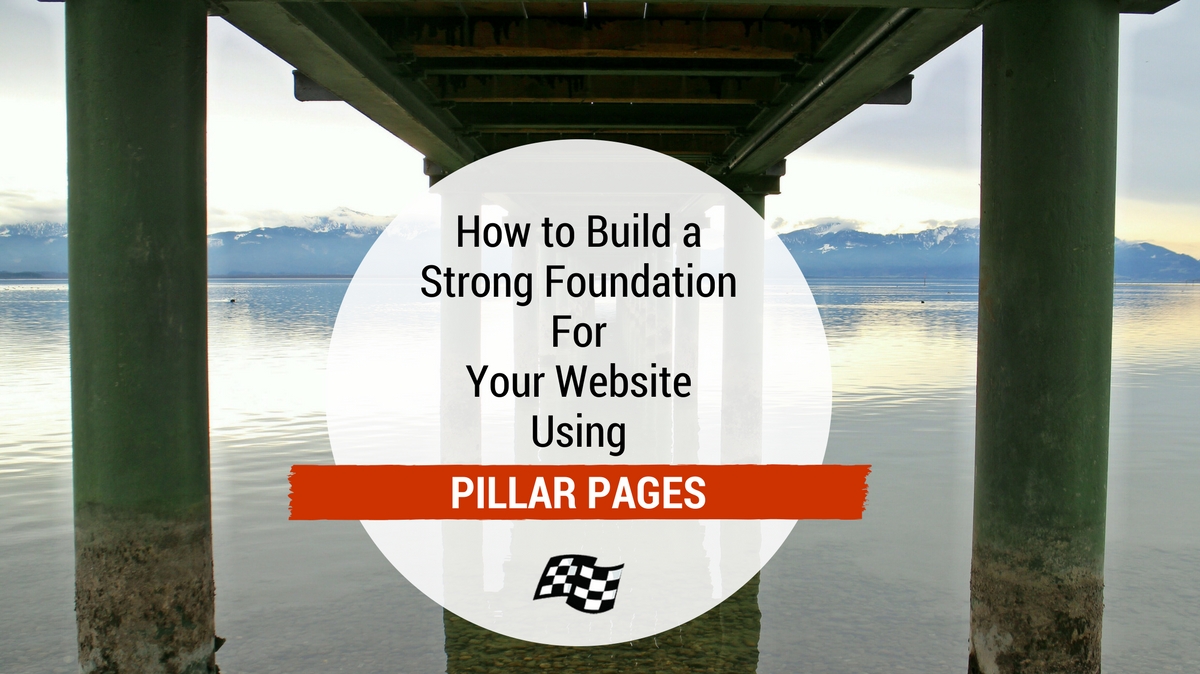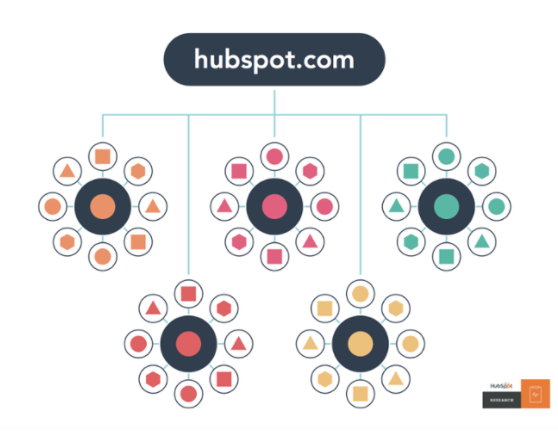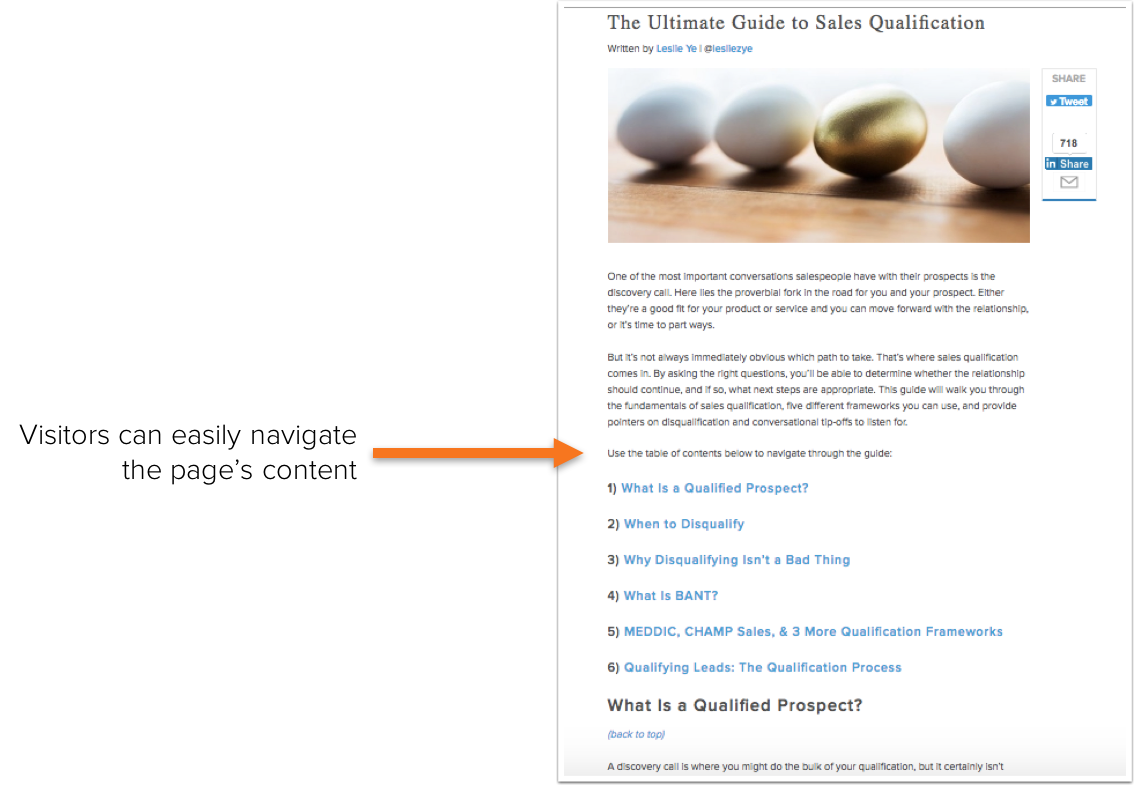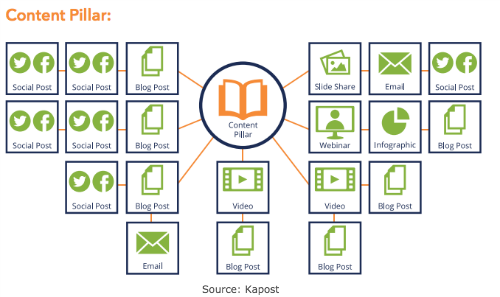
The way consumers use internet searches is changing. It’s no longer enough to rank for a handful of keywords. Instead, we need to optimize with topics in mind.
The new Google algorithm ranking factor, RankBrain, is looking for websites centered on a cohesive theme. If marketers produce high-quality content based around a central theme and optimize their website appropriately, then, in theory, rankings will naturally increase for all related keywords.
That’s where pillar pages come into play. Let’s explore the concept in more detail.
What Are Pillar Pages?
Pillar pages are unique pieces of content in the form of either a blog post or a page on your website which are designed to offer a comprehensive overview of the topic for which you are attempting to rank in the search engines. They can be a powerful way to structure and organize your website, making it easier for visitors to search and navigate.
For example, if one of the topics you frequently cover on your blog is email marketing, you’re likely to have several blog posts published, each one discussing a different technique or issue. For the optimal site organization, your website needs a pillar page summarizing all aspects of the topic. You can then link back to the pillar page from all related blog posts, giving visitors a roadmap to finding out everything about the topic.
Hubspot illustrated this format and gathered together a selection of example pillar pages to show how to utilize them in organizing a website efficiently.

The Benefits of Using Pillar Pages
While creating pillar pages within your site is primarily about developing a strong foundation for your content strategy, there are also some other benefits of the technique:
- Visitors will spend longer browsing your pages
- Bounce rate on blog posts will decrease
- Pillar pages naturally generate backlinks and social media shares
- The content has excellent longevity and will bring in traffic throughout the lifetime of the site
- Pillar pages have a higher word count, which, coupled with the shares and backlinks, will secure a higher Google ranking
- Pillar pages can be updated every time you add new content on the topic, meaning a constant supply of fresh content – which Google loves!
Developing Effective Pillar Content
Now that we understand what pillar pages are and how we can benefit from them, the next logical step is to go ahead and start building one! It might seem overwhelming at first, but this step-by-step guide should make it much more manageable.
Step 1: Choose A Topic
The first step is to decide on your topic. Put all thoughts of keywords aside for now and focus all your attention on the topic. If you have done the appropriate research, you will already have a good idea of who your audience is and what they’re looking for from your content.
The topic needs to be broad enough to allow plenty of spin-off content but at the same time narrow enough for you to select some specific keywords. For example – “Social Media” is far too broad a topic to work well as a pillar page, but you could narrow this down to “Facebook Marketing.” A general rule of thumb is that you should be able to quickly come up with 20 to 30 blog posts on your pillar topic.
Step 2: Create Your Pillar Page
Once you have settled on the topic, it’s time to create your pillar page. You could start from scratch, or if you have an existing piece of content that offers comprehensive coverage of the topic, you may choose to build on that instead.
You will want to include a definition of the topic as part of the introduction and a bullet list table of contents. Use specific keywords in your subheadings and offer a summary of each subtopic. Don’t go into too much detail in these subtopics, as you will eventually create a separate in-depth blog post for each of them.
BuzzSumo offers an excellent example of a pillar page that is easy to navigate and offers a good overview of the main topic. The information is broken up into more manageable sub-topics, making it much more user friendly.

Step 3: Choose Keywords
Remember those keywords we pushed aside? Now is the time to revisit them. Once you have created a pillar page, you can get back to the traditional keyword research that you are familiar with. Look for those keywords with a substantial search volume allowing you to cover various subtopics. These keywords should then help you to build up a list of potential blog post titles.
Step 4: Start Creating Blog Posts
The final step is one you should already be familiar with – producing content. Start writing blog posts specific to your keywords. Work on creating high-quality content that offers your reader something of value. Don’t forget to link to the pillar page so readers can easily access it and find the rest of the content relating to the main topic. The more of your content your audience engages with, the higher all of your content will rank in SERPs.
It doesn’t have to stop with blog posts. Think about some of the other types of content that you can produce to support the central topic. As illustrated below, Kapost suggests adding relevant video content, infographics, social posts, and more to really enrich your pillar page.

Building pillar pages for your website may mean some additional effort, but the result will be worth it. Not only will your website have a much more stable and organized structure, but your content will rank higher on SERPs as a result. As the way consumers search the internet continues to evolve, so too must our content marketing strategies. Pillar posts are the next step in that evolution.

 Pillar pages are unique pieces of content designed to offer a comprehensive overview of the topic for which you want to rank.
Pillar pages are unique pieces of content designed to offer a comprehensive overview of the topic for which you want to rank.
2 Responses to How to Build Strong Foundation for Your Website Using Pillar Pages